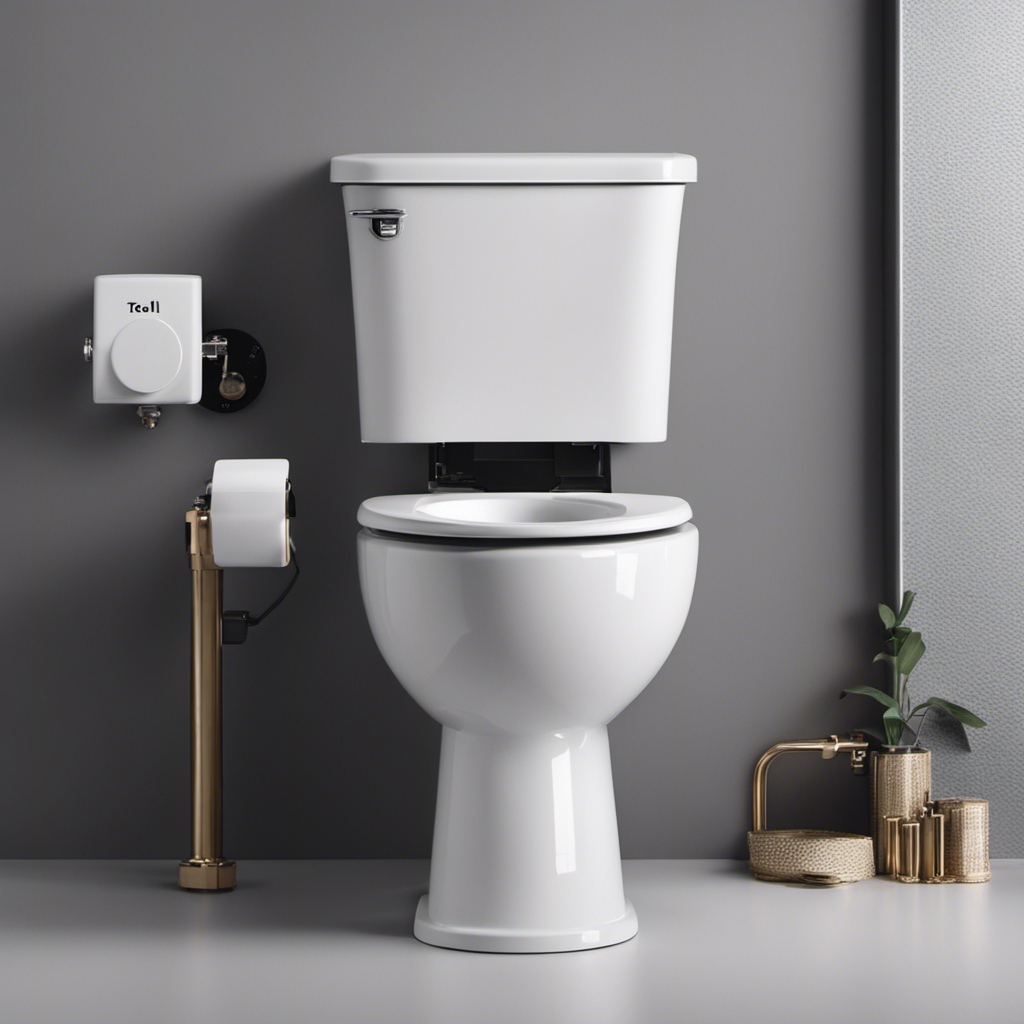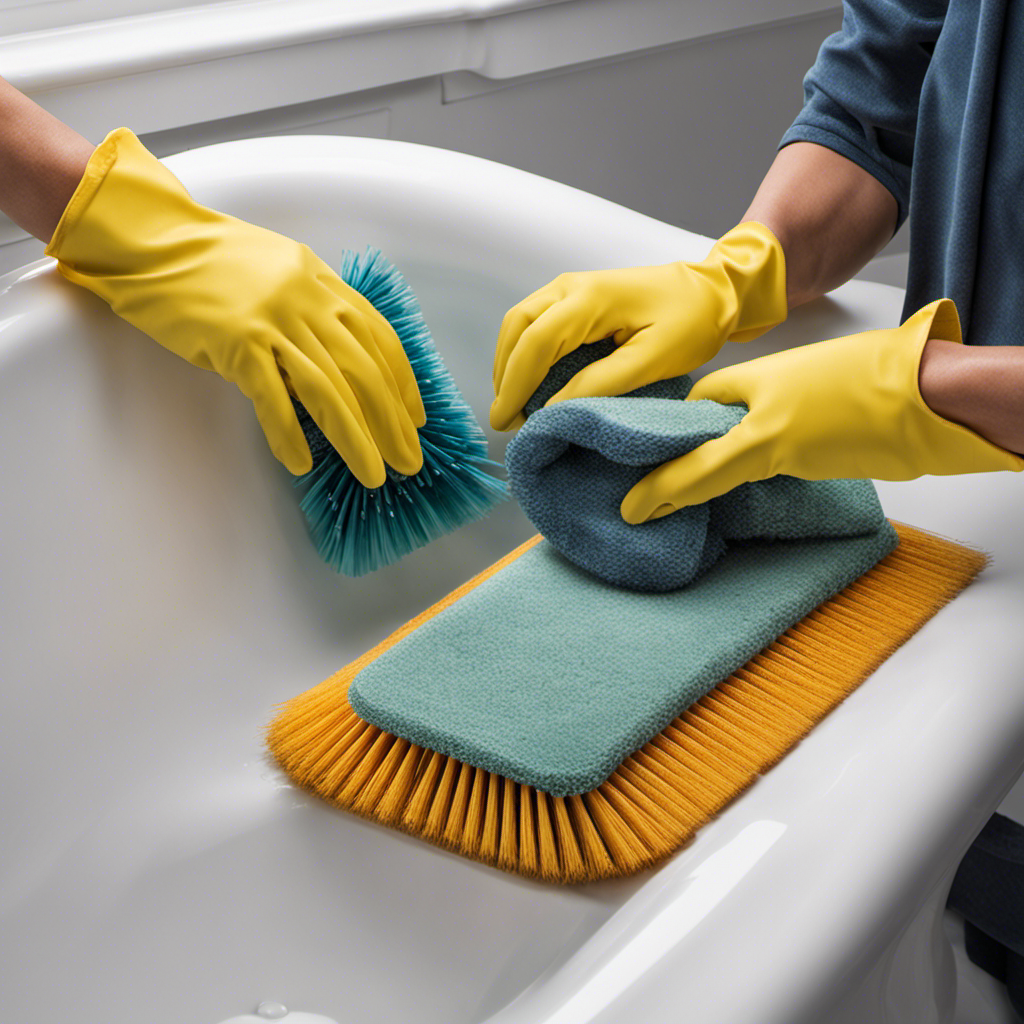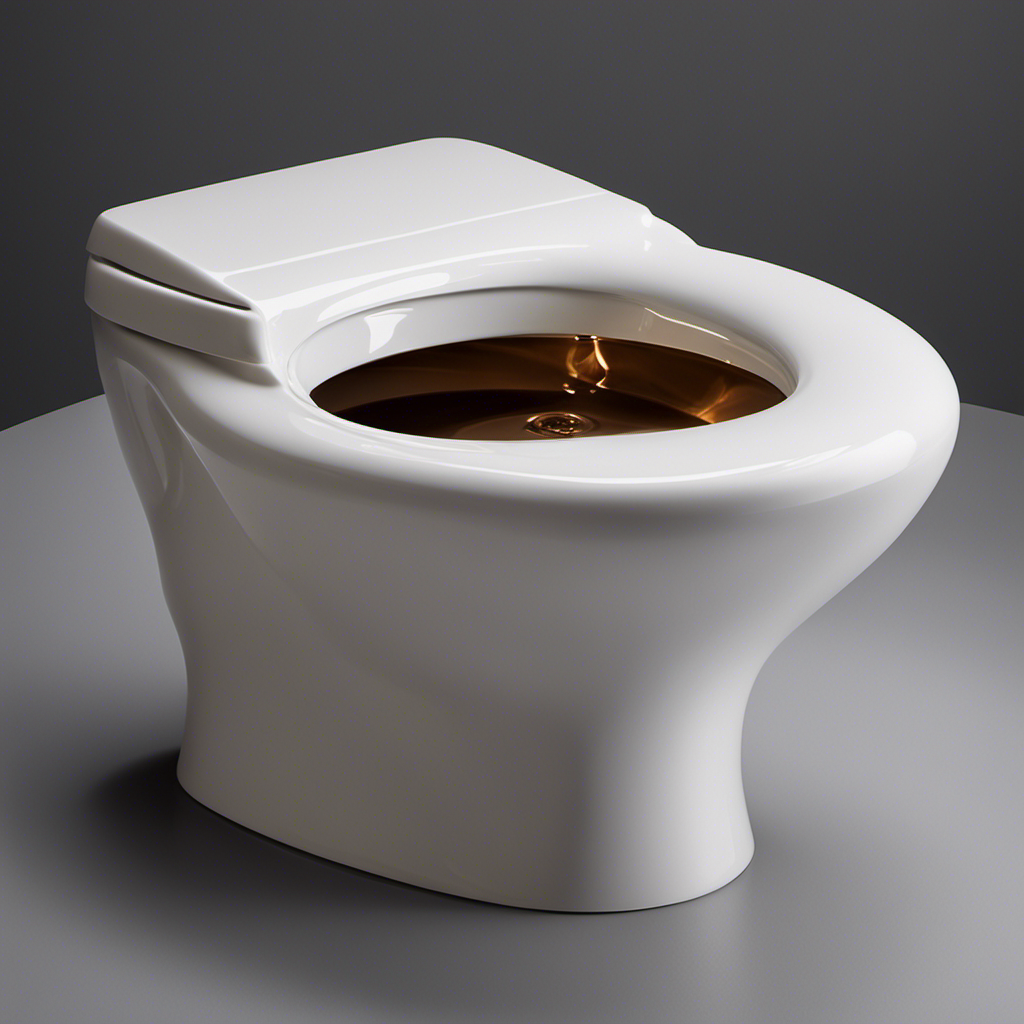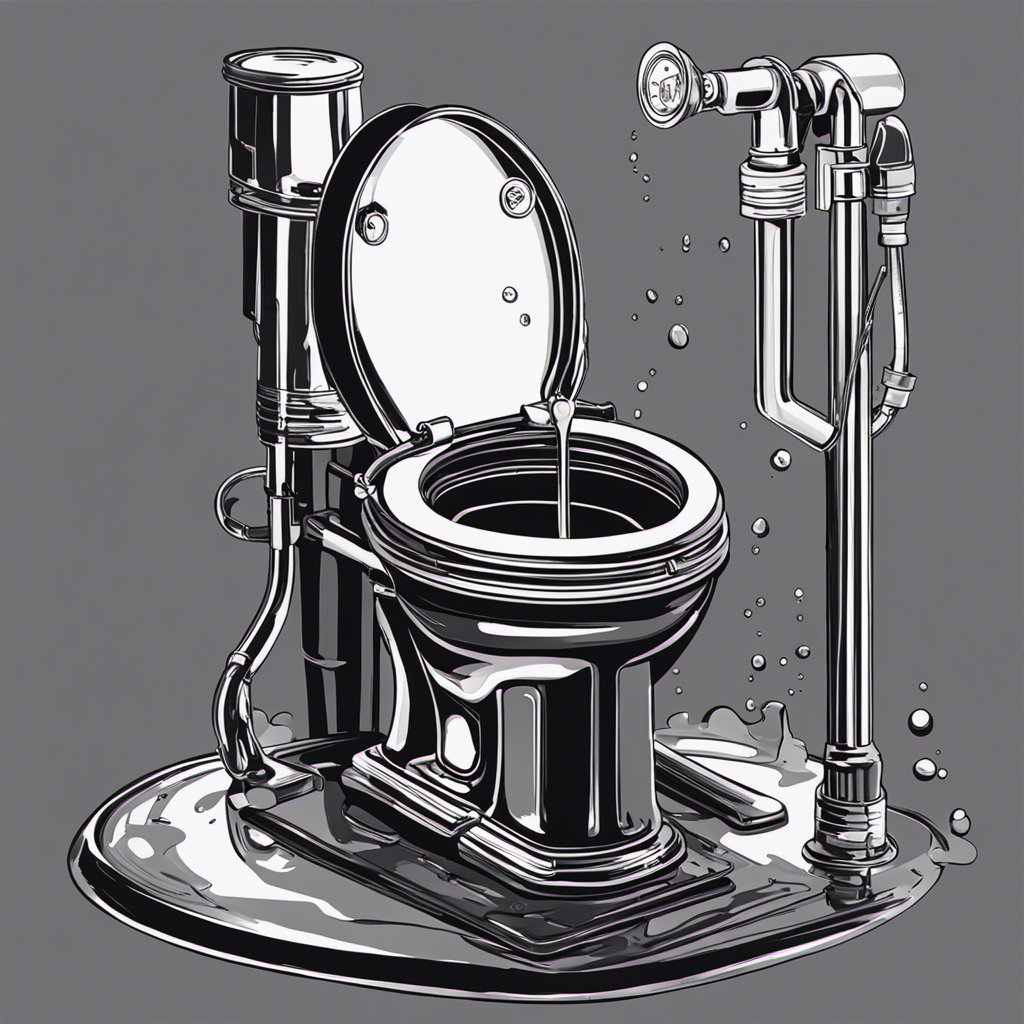As a homeowner, I’ve experienced the frustration of a toilet that constantly cycles on and off.
Did you know that a leaking toilet can waste up to 200 gallons of water per day? That’s a staggering amount!
In this article, I’ll guide you through the troubleshooting process and help you identify the culprit behind this annoying issue.
By checking the water supply valve, flapper, fill valve, float arm, and overflow tube, we’ll get your toilet back to its efficient, water-saving self in no time.
Key Takeaways
- Check the water supply valve is fully open and securely fastened to the valve to avoid any leaks or damage.
- Examine the flapper for signs of wear or damage, and replace if necessary. Also, adjust the chain length for a tight seal.
- Check the water level in the toilet tank and adjust the fill valve to achieve the optimal water level. Ensure steady and consistent water flow.
- Inspect the float arm to control the water level in the tank and adjust it properly to prevent constant running or insufficient flushing.
Water Supply Valve
First, you should check if the water supply valve is fully open. The water supply valve controls the flow of water into the toilet tank. If the valve is not fully open, it can result in low water pressure, which may cause the toilet to cycle on and off. To ensure the valve is fully open, turn it counterclockwise until it stops.
Additionally, check the supply line connection. Make sure it is securely fastened to the valve and there are no leaks or kinks in the line. If the supply line connection is loose or damaged, it can also cause issues with water pressure.
Once you have checked these two factors, you can move on to the next step: inspecting the flapper.
Flapper
One thing you could examine is if the flapper is working properly. The flapper is a crucial component of a toilet’s flushing mechanism. It is responsible for sealing the flush valve and preventing water from continuously flowing into the toilet bowl.
To ensure optimal flapper maintenance, start by inspecting it for any signs of wear or damage. Look for cracks, tears, or deformities in the flapper. If you notice any issues, it is recommended to replace the flapper.
Additionally, check the chain length and adjust it if necessary. A chain that is too long or too short can interfere with the proper functioning of the flapper.
Troubleshooting flapper issues involves ensuring a tight seal, adjusting the chain, and replacing the flapper if needed.
Fill Valve
Make sure you’re checking the fill valve to ensure it’s working properly and not causing any issues with the toilet’s water flow. The fill valve is an essential component of the toilet tank that regulates the water level in the tank.
Here are three things to check when inspecting the fill valve:
-
Water level: Check if the water level in the toilet tank is too high or too low. Adjust the fill valve accordingly to achieve the optimal water level, which should be around 1 inch below the top overflow tube.
-
Water flow: Observe the water flow from the fill valve into the toilet bowl. It should be steady and consistent. If the water flow is weak or intermittent, there may be a blockage or malfunctioning in the fill valve.
-
Leaks: Inspect the fill valve for any signs of leakage. Look for water pooling around the base of the fill valve or any dripping water. If there are leaks, it’s crucial to address them promptly to prevent water wastage and potential damage to the toilet bowl.
Float Arm
The float arm, also known as the float rod, is responsible for controlling the water level in the toilet tank. It is a crucial component of the toilet flush mechanism.
When the toilet is cycling on and off, one of the first things to check is the float arm. Make sure it is properly adjusted so that the water level in the tank is at the correct height.
If the float arm is too high, it can cause the toilet to constantly run as it continuously tries to fill the tank. On the other hand, if the float arm is too low, it may not allow enough water into the tank for a proper flush.
Adjusting the float arm will help ensure the optimal water level in the toilet tank and prevent unnecessary cycling.
Overflow Tube
When the float arm is properly adjusted, it helps prevent the water in the toilet tank from overflowing through the overflow tube. The overflow tube is an essential component of the toilet’s flushing mechanism. It allows excess water to flow into the toilet bowl when the tank is filled beyond its capacity.
If the overflow tube malfunctions, it can cause water to continuously overflow into the bowl, leading to potential water damage and higher water bills.
To fix a toilet with a malfunctioning overflow tube, here are three steps you can follow:
-
Inspect the overflow tube for any cracks or damage. If you find any, replace the tube with a new one.
-
Check the water level in the tank. If it’s too high, adjust the float arm to lower the water level and prevent overflow.
-
Ensure that the fill valve is working correctly. If it’s not, replace it to ensure proper water flow and prevent overflow.
Frequently Asked Questions
How Do I Know if My Toilet’s Water Supply Valve Is Faulty?
First, I would check the toilet’s fill valve to ensure it’s functioning properly. If the cycling issue persists, I would proceed to troubleshoot the water supply valve to determine if it’s faulty.
What Are Some Common Signs of a Malfunctioning Flapper in a Toilet?
First, I would check the flapper for signs of malfunction, such as leaks or improper sealing. If the flapper seems fine, I would then troubleshoot the fill valve to ensure it is functioning properly.
How Can I Troubleshoot a Fill Valve That Is Not Shutting off Properly?
First, I would troubleshoot the fill valve by checking for any debris or obstructions that may be preventing it from shutting off properly. Then, I would adjust the water level to ensure it is at the correct height.
What Should I Do if the Float Arm in My Toilet Is Not Adjusting the Water Level Correctly?
If the float arm in my toilet is not adjusting the water level correctly, I would first check if it’s properly connected and not obstructed. If that doesn’t solve the issue, I might need to replace the float arm.
Why Does the Overflow Tube Sometimes Cause Water to Continuously Cycle in the Toilet?
The overflow tube can cause water to cycle in the toilet due to a faulty flapper valve or a high water level. To fix toilet cycling, check and adjust the water level and replace the flapper valve if necessary.
Conclusion
In conclusion, when dealing with a toilet that is cycling on and off, there are several key components to check.
First, ensure that the water supply valve is fully open and not partially closed.
Second, examine the flapper to ensure it is sealing properly and not causing water to continuously flow into the bowl.
Third, check the fill valve to ensure it is functioning correctly and not causing the tank to overfill.
Fourth, inspect the float arm to ensure it is properly adjusted and not causing the tank to fill excessively.
Lastly, make sure the overflow tube is not blocked or damaged.
By addressing these potential issues, you can troubleshoot and resolve the cycling problem efficiently.
For instance, in a recent case study, a toilet was cycling on and off due to a faulty flapper that was not sealing properly, causing water to continuously flow into the bowl. Once the flapper was replaced, the cycling issue was resolved, and the toilet returned to normal functioning.










